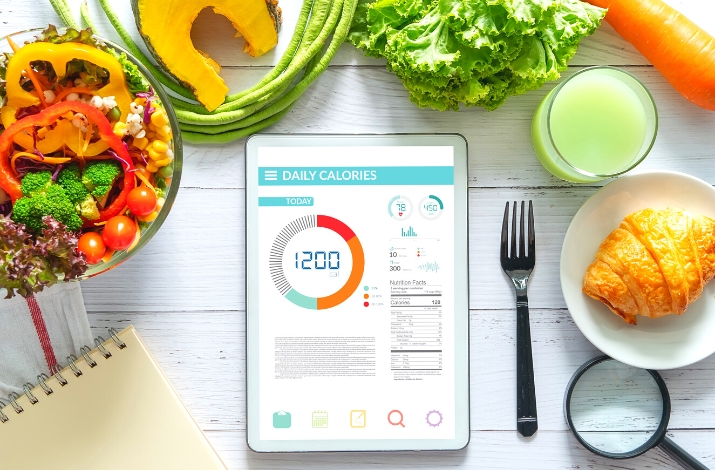When you think about building muscle, you might picture bodybuilders at the gym. But here’s the truth: muscle isn’t just about aesthetics or performance. Muscle is your metabolic currency, your health armor, and one of the most powerful tools you have to fight metabolic diseases, inflammation, and aging. Yet, for many in the South Asian community, building muscle often takes a back seat to cardio or weight-loss dieting.
It’s time to change the narrative. It’s time to build strength, build resilience, and build the future of your health.
Why Muscle is Your Superpower
Muscle does far more than keep you strong. It plays a pivotal role in:
- Regulating blood sugar: Muscle is the primary site where your body stores and burns glucose. For a community with one of the highest rates of Type 2 diabetes in the world, this is vital.
- Fighting inflammation: Regular resistance training produces myokines—hormone-like proteins that reduce chronic inflammation and boost immune health.
- Longevity and resilience: Muscle protects you during illness, helps you recover faster, and even reduces your risk of conditions like heart disease, Alzheimer’s, and osteoporosis.
Punchline: “Muscle is not just about strength; it’s about survival.”
The Shift We Need: Building Muscle, Not Just Losing Fat
For too long, the focus in our community has been on weight loss—fad diets, endless cardio, and restrictive eating. But this obsession with losing fat often comes at the expense of muscle. In fact, most diets that promise rapid weight loss can lead to losing 30–40% of lean muscle, leaving you weaker and metabolically slower.
Here’s a better approach:
Focus on what you can add, not what you need to take away. Build muscle by prioritizing:
- Protein-rich meals (more on that below).
- Resistance training to stimulate muscle growth.
- Mindset shifts that focus on strength over the scale.
Punchline: “The goal isn’t just to shrink. It’s to grow stronger and healthier.”
Why South Asian Women Must Prioritize Muscle
Women, especially, have been overlooked when it comes to muscle health. But ladies, here’s the deal: resistance training isn’t optional—it’s essential.
- Hormonal balance: Muscle improves insulin sensitivity, making it a key factor in managing PCOS and gestational diabetes—both of which disproportionately affect South Asian women.
- Fertility and pregnancy: Strong muscles support a healthy pregnancy by improving glucose metabolism and reducing the risk of complications like gestational diabetes.
- Menopause management: After menopause, women experience a dramatic drop in estrogen, leading to faster muscle loss and an increased risk of obesity, diabetes, and bone fractures. Building muscle before and during menopause can mitigate these risks.
Punchline: “Strong women build strong futures—hormonally, metabolically, and emotionally.”
The Protein Prescription
Protein is the foundation of muscle health. But most of us in the South Asian community aren’t getting enough. Many women over 60 consume just 60–70g a day—far less than the recommended minimum.
Here’s how to fix it:
- Aim for 1 gram of protein per pound of body weight. For a 150-pound person, that’s 150 grams of protein daily.
- 30–50 grams of protein per meal is ideal to stimulate muscle growth.
- Include high-leucine foods (like eggs, chicken, lentils, and whey protein) to optimize muscle protein synthesis.
Vegetarians? You’re not left out! But remember, plant-based proteins often come with more carbs. You’ll need to eat about 35% more total protein to meet your muscle-building needs.
Pro tip: Creatine supplementation (3–5g daily) can be especially beneficial for women, supporting energy, brain health, and exercise performance.
How to Get Started with Resistance Training
You don’t need a gym membership or fancy equipment to begin building muscle. Here’s a beginner-friendly roadmap:
- Start small: Resistance training 2–3 times a week is enough to make a difference.
- Go hard: The goal is to fatigue your muscles. Lift weights, use resistance bands, or even do bodyweight exercises like squats, push-ups, and lunges.
- Consistency over complexity: You don’t need to spend hours at the gym. A focused 20–30-minute workout can be just as effective.
Punchline: “Your health doesn’t need perfection; it needs consistency.”
Breaking the South Asian Health Cycle
As a South Asian, I know how much our culture revolves around food, family, and traditions. But here’s the hard truth: our community faces one of the highest risks of Type 2 diabetes, cardiovascular disease, and metabolic syndrome. The good news? By building muscle and prioritizing metabolic health, we can rewrite our health story.
Imagine a future where:
- You can enjoy that plate of biryani without worrying about your glucose spikes.
- You feel stronger and more energetic than ever.
- You age gracefully, without fear of frailty, memory loss, or chronic disease.
Key Takeaways
- Muscle is your metabolic superpower. Build it to fight inflammation, stabilize blood sugar, and age gracefully.
- Prioritize protein (1g per pound of body weight) and resistance training. Focus on adding strength, not just cutting calories.
- Women—especially during pregnancy, menopause, or managing PCOS—must make muscle health a priority.
Your Call to Action
It’s never too late to start. Here’s how you can take the first step today:
- Protein check: Plan your next meal with at least 30g of high-quality protein.
- Move now: Do 10 bodyweight squats or push-ups as soon as you finish reading this.
- Commit: Block 20 minutes in your calendar this week to try resistance training.
Let’s build strength for ourselves, our families, and our community. Together, we can break the cycle of metabolic disease and embrace a future of health and vitality.
Punchline: “You’re stronger than you think—and your muscle is the proof.”
Ready to transform your health? Let’s do this! 💪






